|
|
Tara Mountain
|
Mt. Tara lays in the west of Serbia. Together with a
part of the Drina river canyon, it has been
established as a national park in 1981.The greatest part of the Park’s area is covered
with mixed deciduous-coniferous forests
containing beech, spruce, fir, black and Scots
pines, jew,
alder, birch, etc. |
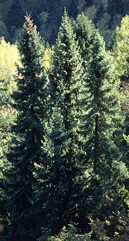
Picea omorika |
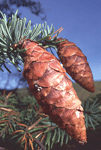
Picea omorika |
The Drina river canyon and
several smaller gorges within the National Park are
considered to have been
refugial
habitats of the old European flora during
glaciations, therefore a large number of relict
and endemic plants in the area should not come
as a surprise. |
|
A fungi species Psilocybe serbica
Moser was discovered on Mt. Tara, and here lies the
locus classicus as well as the entire recent natural
range of Serbian spruce (Picea omorika), a
relict stenoendemic tree species, discovered by
Josif Pančić,
a distinguished Balkan botanist, in 1875. Tara’s
vegetation also boasts specific flora which grows on
ultrabasic, serpentinitic substrate and includes
many Tertiary paleoendemites. |
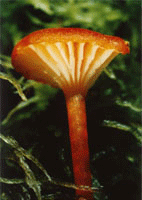
Hygrocybe coccineocrenata |
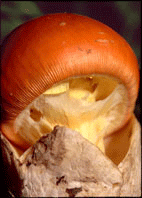
Amanita caesarea |
A number of peatbogs
along river courses offer remains of different
vegetation which dominated the central Balkans
during the glacial and interglacial periods. Around
300 macromycetes and 1000 plant species have so far
been recorded on Tara. |
|
A number of peatbogs
along river courses offer remains of different
vegetation which dominated the central Balkans
during the glacial and interglacial periods. Around
300 macromycetes and 1000 plant species have so far
been recorded on Tara. |
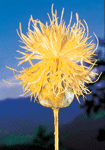
Centaurea alpina |
Đerdap Gorge
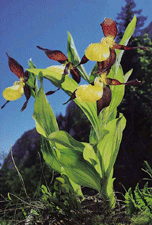
Cypripedium calceolus |
Đerdap gorge is a
natural system of several deep and narrow gorges and
canyons with high and steep crags, interlinked by
dales which are wide and open. As the largest
European refugium of Tertiary flora and vegetation
it is of the most significant area in mountainous
part of Serbia. In the Neogene Đerdap complex was a
part of the Pannonian Sea coast. In Ice Age its
steep calcareous cliffs have yielded protection
from the cold air. Continual presence of a large
quantity of water, as an accumulator and
regulator of heat, has diminished the severe
glacial climate influences. |
|
A witness to the continuity of favorable
climate in this region is the vegetation of polydominant forests that are of the relict age and
with thermophile character. By the number of species
and their organization, those forests bear
resemblance to the forests in tropics and
subtropics. As edificators of communities there
appear on equal basis several trees, the Tertiary
relicts such as Juglans regia, Corylus colurna,
Celtis australis, Fraxinus ornus, Syringa vulgaris. |

Genista subcapitata |
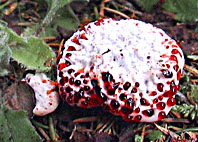
Hydnellum ferrugineum |
The flora of this area encompass over the 1000
species with numerous endemics, relicts and rare
species.
Lepenski Vir,
the prehistoric settlement extended over the period
from 8000-4500 years B.C. is situated in Đerdap
region. Very well preserved remnants of buildings,
artifacts and bones point out to the three distinct
culture levels with eight successive settlements. |
|

